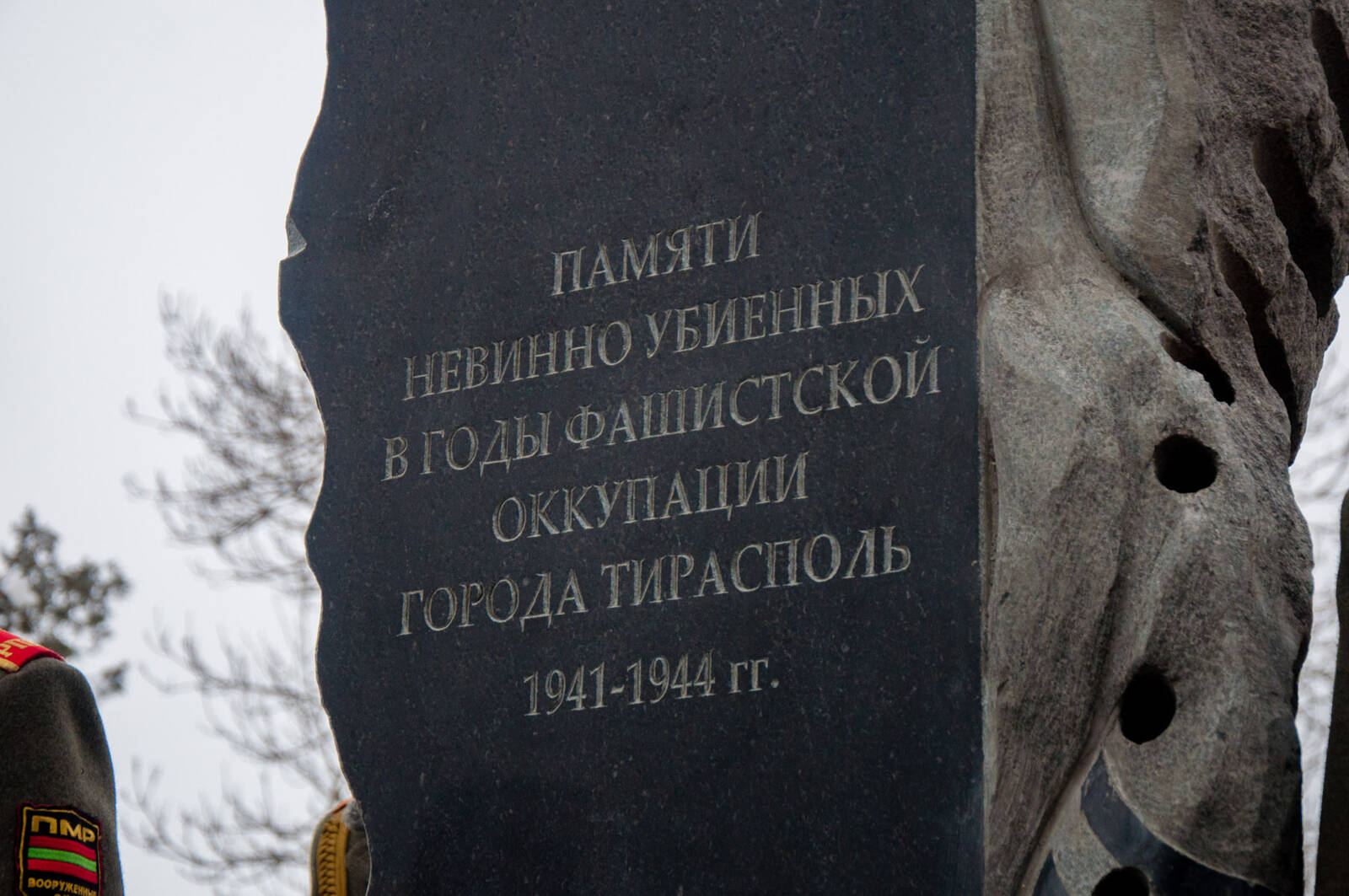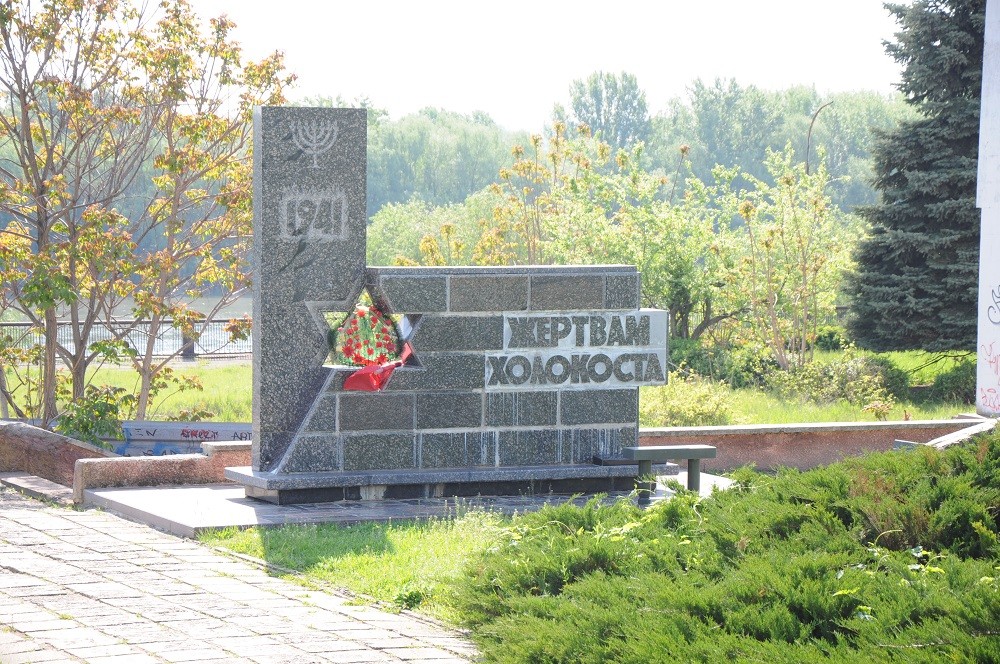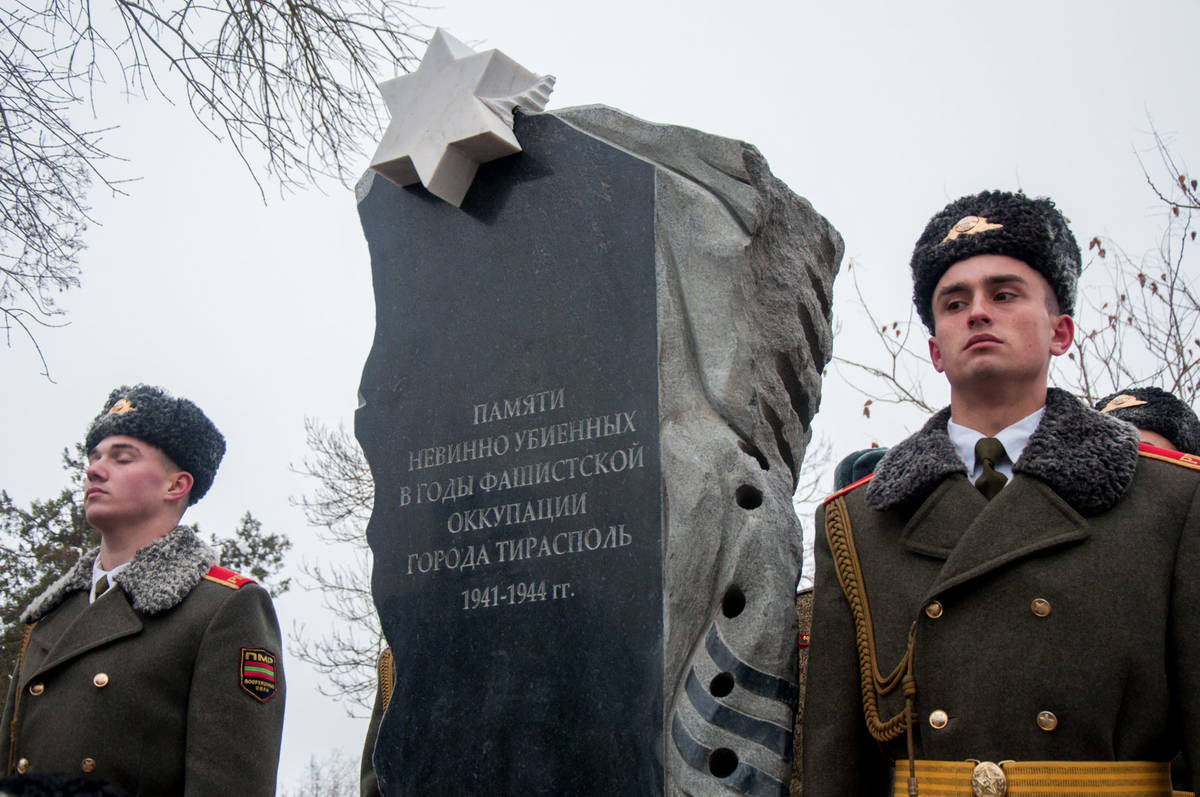Tiraspol, January 27. /Novosti Pridnestrovya/. The world commemorates the victims of the Holocaust ( International Day of Commemoration in Memory of the Victims of the Holocaust ) annually on January 27. On this day in 1945, the Red Army liberated the largest Nazi death camp, Auschwitz, where, according to various estimates, from 1.5 to 4 million people died, most of whom were Jews.
There were many such camps on the territories controlled by the Third Reich (Germany in 1933-1945). There were even more Jewish ghettos. They were created in cities in the occupied areas in order to gather Jews in one place. So it was easier to destroy them, because according to the Nazis` racial concepts, all Jews had to be razed to the ground.
In modern scientific literature and journalism, this policy of Nazi Germany is called the Holocaust (from the Ancient Greek word holocaustosis, meaning "burnt offering", "destruction by fire", "sacrifice.")
During the Fascist-Romanian occupation (August 1941 - April 1944), Pridnestrovie was included in the so-called Pridnestrovye Governorate (between the Dniester and the Southern Bug rivers), which was under the joint control of the Romanian and German occupation authorities.
A system of ghettos and concentration camps was established in Pridnestrovye. There were 6 ghettos in Rybnitsa District, 3 ghettos in Tiraspol, as well as several ghettos in Dubossary and some other settlements.
The fact that Pridnestrovye, created by the occupiers, and the Holocaust are synonyms, was repeatedly said by the President of the PMR Vadim Krasnoselsky, urging not to apply this occupation term to Pridnestrovie.
“The term “Pridnestrovye” in relation to Pridnestrovie was invented by the Moldovan side. But initially it appeared during the Second World War, defining the left bank of the Dniester zone occupied by the Romanians. It included Pridnestrovie and part of Malorossia. We had our own tragedies, like the entire Soviet Union. The execution of about 20 thousand Jews in Dubossary is one of them. This is the Holocaust. For me personally, as a person who respects his history, his people, the term "Pridnestrovye" is synonymous with the word "Holocaust". This is the same concept of occupation that comes through with fascism and nazism. Its use as the name of our state is unacceptable and insulting,” the PMR President said.
"Sonderkommando in Dubossary"
According to various estimates of historians, from 40 to 90 thousand Jews were exterminated in Pridnestrovie during the years of occupation.
The events in Dubossary in September 1941 formed the basis for the book of the candidate of historical sciences Igor Shornikov "Sonderkommando in Dubossary". It was published in 2016 and contains detailed information about the Holocaust in Pridnestrovie. It not only tells about the genocide victims, but also names the executioners.
The Sonderkommando is the paramilitary death squads of Nazi Germany that carried out the massacre of civilians on the territories it occupied. Jews, Gypsies and other so-called racially handicapped people were the main targets, as well as the political intelligentsia, communists, members of the resistance movement and "antisocial elements".
From 12 to 28 September 1941, the Sonderkommando destroyed from 6,000 to 8,000 people in Dubossary. Having organized the "death conveyor", the German unit moved further east, but the killing did not end there. Their work was continued by the Romanian occupation authorities.
In the next two years, the occupiers killed another 10,000 to 12,000 people. Jews were driven from Rybnitsa, Grigoriopol, Tiraspol, Kotovsk, Balta, Chisinau, Balti and even from Odessa. Dubossary was turned into a place of mass executions.

According to eyewitnesses, none of the first inhabitants of the Dubossary ghetto thought that they would be killed. They were aware that life under the occupation would be difficult. But nevertheless, no one had thoughts of death. But on the night before the execution, the men were taken out of the barracks and forced to dig deep holes.
"When people ask why?" the soldiers replied that the holes were for storing potatoes. But no one believed it. First they began to shoot men, and then they shot women and children,” Igor Shornikov said in his book.
Eyewitnesses claimed that the killing was not carried out by the Germans, but by the Romanians, who did it in a state of celebration. There was a table with various food and alcoholic beverages not far from the place of execution.
Back then, Peter Ignatiev from Dubossary was 13 years old. He will remember the September massacre for the rest of his life:
“Having shot the men, they brought women and children. Before killing them, they took away gold, cut off their braids. Small children were forced to be lifted onto the shoulders of adults, and those who were older were forced to kneel in front of the hole. Then it happened again. When the hole was full with executed, it was covered with straw and earth. Guards were posted nearby. The next day, we could see how the ground above the hole rose and fell, as if it was breathing. There were still living people in the graves".
Nikolay Khvorostyan miraculously survived. Ha is a boy who the invaders took to execution together with his family.
“This Russian family,” he said after the war, “hid us in the basement. But someone gave us away. Mother, father, me (I was then 14 years old) and six older sisters were locked up in a tobacco factory. They kept us there for a month, starved us to death - they knew that our mother and sisters were communists. In the afternoon they drove us to the holes. They lined up three people in a row and fired. Our parents died together. My sisters Zlota and Peysa were taken away by the Germans the night before. They gibed at them, and then they hanged them at sunrise. Then they were thrown into one of the holes. I was placed between my sisters Lyuba (with a baby in her arms) and Zhenya. And then they shot ... I woke up in the middle of the night. My back ached. The bullet, striking, must have touched me but did not enter the body. That`s why I survived. I could not breathe under the corpses in the viscous blood. I began to get out carefully. It was slippery with blood around the hole. There were fingers and pieces of meat. I took one last look at my family. It seemed to me that I was going to lose my mind. Besides me, there were six more people survived that night. We ran off in different directions and never saw each other again."
The boy was hiding at his neighbors, who transported him to besieged Odessa, and then evacuated to the East. In 1944, Khvorostyan went to the front, where he fought as part of the Danube military flotilla.
Occupation in Tiraspol
In August 1941, about 1.5 thousand Jews were herded into the courtyard of a summer cinema in occupied Tiraspol. Exhausted by hunger, they were taken to the Dniester, where they were shot, while their corpses were thrown into the river.
There were ghetto camps in the city. One of them was located on the territory of the Lenin city hospital. The fact of its creation was carefully disguised, outsiders were not allowed to the site.
In October-November 1941, the Romanian invaders carried out another mass execution of the Jewish population. About 1.5 thousand people, including women and children, were killed by soldiers in a quarry near the Kolkotovaya Balka region. The corpses were taken to the Dniester and thrown into the river.
From 1.5 to 3 thousand Jews died during the occupation in Tiraspol. According to other sources, the number of those killed reached 12 thousand people.

Massacres in Bendery
On July 21, 1941, Bendery was occupied by German and Romanian troops. Part of the Jewish population managed to evacuate. Immediately after the beginning of the occupation, there was formed a ghetto in the city. At the same time, 58 Jews were shot in a ditch near the Bendery Fortress. About 300 people were killed at the ship repair shops.
Another 700 Jews were executed in the ditch of the Bendery Fortress. Then this ditch was nicknamed Babi Yar of Bendery and a memorial plate was erected there.
Another 1,000 people lost their lives in the anti-tank ditch. The rest of the residents of the city of Jewish nationality were deported to the camps in Pridnestrovye.
During the years of the German-Romanian occupation, 2.5 thousand citizens of Jewish nationality were killed in Bendery District.
According to some reports, about 12 thousand Jews lived in Bendery before the start of the Great Patriotic War, in 1942 only a few people survived. And in 1943 there were only two people.

Holocaust in Rybnitsa
From 1941 to 1942, about 25 thousand Jews marched through Rybnitsa to the camps of Pridnestrovye. In the city there were 6 ghetto camps, where Jews were brought from the MSSR, a number of regions of Ukraine, cities and districts of Romania.
In her memoirs, a former prisoner of the Rybnitsa ghetto, Maya Ilyinichna Feldman, said that the camp had been located in the lower part of the city on three streets named after Sholom Aleichem. The site had a barbed wire fence.
“It was an underdeveloped and dirty part of the city with small clay houses. About 2 thousand people were accommodated in such a way that several families lived in one room. It was cold in winter, there was no heat in the house. The apartments were flooded with rats, there were even cases when they attacked people. We ate poorly, mostly with a gendre - a cornmeal soup without salt. We stole hominy from horses, washed it and made a gendre. We stole sugar beets, which we baked in the oven, and then drank boiling water with it (it was our tea). The residents of the city helped us to survive. We exchanged clothes for bread - one for one."
According to Maya Ilyinichna`s recollections, after the defeat of the German troops at Stalingrad, all the ghetto inhabitants were taken to the square and promised to be shot. However, they kept us on our feet all day, not even letting us sit down.
During the Holocaust, more than 6 thousand Jews, both local residents and immigrants from Bessarabia and Bukovina, were killed by the German-Romanian Nazis on the territory of Rybnitsa. Those Jews who managed to leave the city before the occupation managed to escape.
Many people from Rybnitsa were hiding under the threat of the death penalty, some were released by the underground fighters.
The Rybnitsa ghetto lasted 936 days (from September 7, 1941 to March 29, 1944). About 3 thousand people were imprisoned there, 2,731 were killed.

Kamenka
The Nazis also carried out a policy of mass executions and forced imprisonment of the population in a ghetto in Kamenka. More than 500 Jews were killed there, while all residents of Jewish nationality were exterminated in the village of Rashkov.
Nobody knows the exact number of victims of the Holocaust. The figure that historians are guided by is about 6 million people. It was one third of the entire Jewish population in the world at that time.








